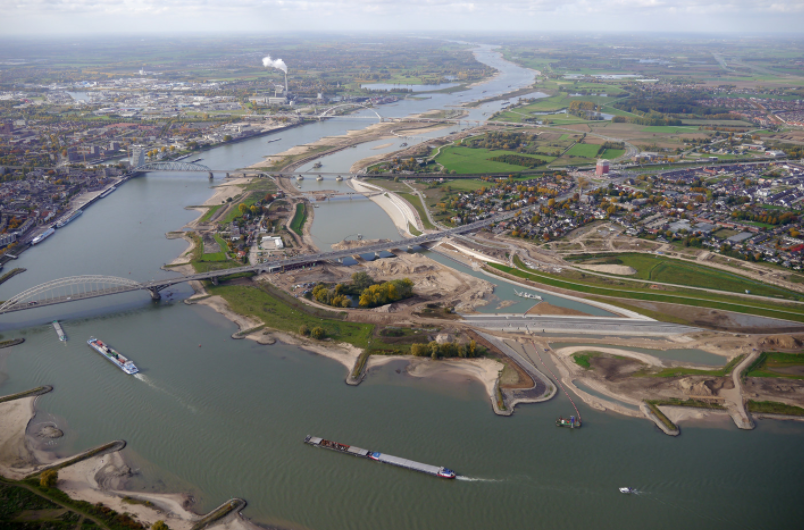At Nijmegen, the Waal River bends sharply and narrows. This creates a bottleneck, which often caused flooding of the historic city centre of Nijmegen, located on the south bank of the Wall. After the floods of 1993 and 1995 and faced with increased risk of flooding due to climate change, the city of Nijmegen decided to give more room to the Waal River, at the same time protecting nearby natural habitats and providing recreational space. In 2012, the city began adapting the river and its shores moving the main existing dike (in front of Lent, a village part of Nijmegen municipality located on the norther shore of the Waal River) 350 m inland, and digging an extensive new river channel parallel to the original. By its completion in 2016, the project succeeded in achieving a 35 cm river water height reduction (a greater target of the 27 cm initial one). During high river flows, one-third of the total amount of water is discharged through the new ancillary channel. The implemented measures also created an island that is now used as a unique urban river park in the heart of Nijmegen with room for living, recreational activities, culture, water and nature.
You are here
Room for the River Waal – protecting the city of Nijmegen
Autor:



